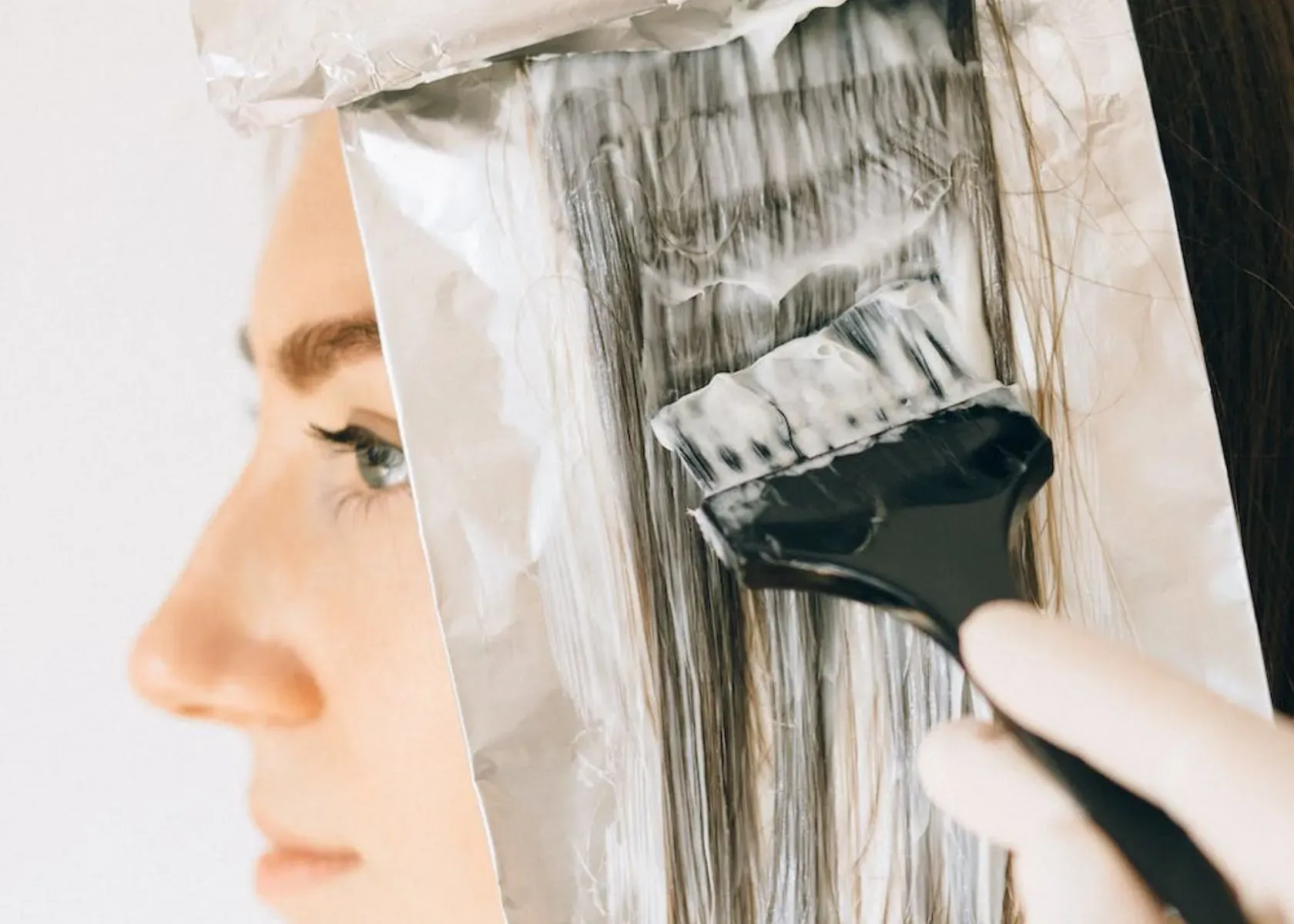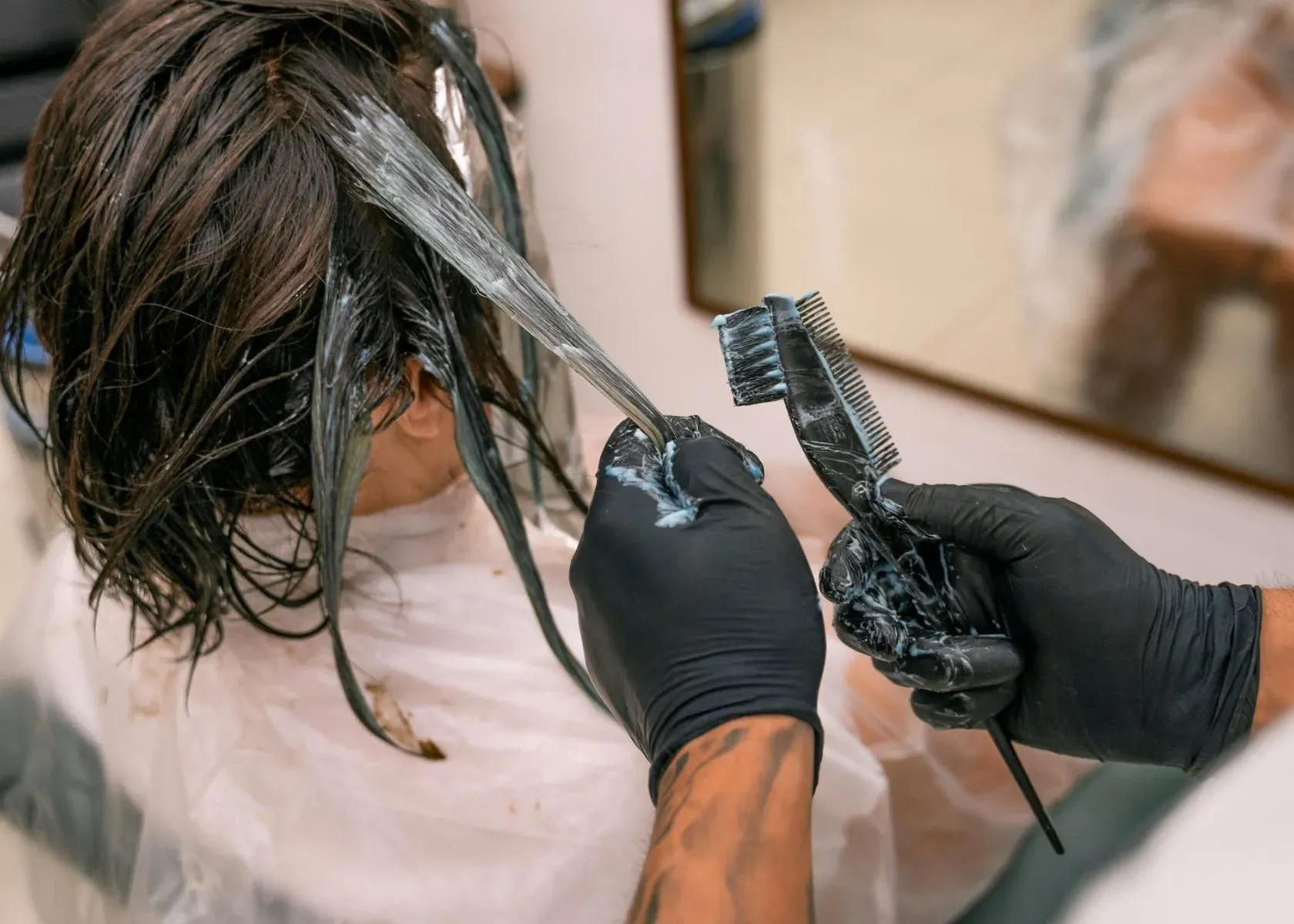Are you dreaming of sun-kissed, bleached curls but worrying about the damage it might cause? Many curly-haired folks hesitate to lighten their locks due to fears of frizz and fried ends.
Bleaching can be tricky with those beautiful spirals; it's a delicate balance between achieving your desired color and maintaining healthy hair. Here's one fact you should know: While bleach can weaken your hair if misused when done right, even curly strands can embrace a lighter shade without losing their bounce.
In this article, I'll guide you through each step on how to bleach curly hair type safely—so that you shine brighter without worry.
- Before bleaching curly hair, assess its natural texture and porosity to determine how it will react to the bleach. Using bond-building treatments like Plex can help protect curls during the process.
- Gradually lighten your hair using a "Low + Slow" method to minimize damage; avoid washing your hair right before bleaching to preserve natural protective oils.
- Maintain the integrity of bleached curls with regular deep conditioning treatments, skip frequent washes to retain scalp oils, and minimize heat styling by using heat protectants or air-drying when possible.
- Consider alternatives like colored wigs or super-lightening dye for less damaging ways to change hair color; try the balayage technique for a more natural look that preserves curl patterns.
- For healthy aftercare, use sulfate-free and hydrating products specifically designed for curly hair post-bleach treatment.
The Basics of Bleaching Curly Hair

Understanding the effects of bleach on naturally curly hair is essential for safe and healthy bleaching. Factors such as hair porosity, texture, and previous treatments should be considered before bleaching curly hair.
Understanding the Effects of Bleach on Hair
Bleach works by penetrating the hair shaft and reacting with the melanin inside, which is what gives your textured hair color. This chemical reaction breaks down the melanin, stripping away the dark colour from your strands and lightening them.
However, this process doesn't stop at just removing color; it also leads to a breakdown of disulfide bonds in keratin. These bonds are crucial for keeping your hair strong and resilient.
As bleach dissolves these bonds, curly hair can lose its natural bounce and become more prone to breakage.
Curly hair is particularly vulnerable because of its coil shape; damage can disrupt curl patterns, making it look frizzy or limp. Using products like purple shampoo during bleaching helps maintain some structural integrity in the curls while staving off potential damage from over-processing.
The "Low + Slow" method ensures that bleaching occurs gradually, reducing risks significantly – a safer path toward achieving that platinum blonde ambition without compromising on healthiness or style.
Factors to Consider Before Bleaching Curly Hair
Bleaching curly hair can have different effects compared to straight hair, so understanding the impact is essential.
- Take into account the hair's natural texture and porosity before deciding on the level of lightness.
- Consider consulting a professional hairstylist who has experience in bleaching curly hair.
- Keep in mind that frequent bleaching can lead to damage, so it's important to space out treatments accordingly.
- Research and select sulfate-free products specifically designed for bleaching curly hair at home.
- Be aware that using too much bleach or leaving it on for too long can result in excessive damage, so proceed with caution.
- Prioritize deep conditioning and moisturizing treatments to maintain the health of your curls during and after the bleaching process.
- Understand that minimizing heat styling and using protective styles can help preserve the integrity of your bleached curly hair.
Preparing Your Hair for Bleaching

Before you bleach textured hair, it's crucial to establish realistic goals and understand the potential effects on your curl pattern. Regular treatments to condition and strengthen your hair will also help prepare it for the bleaching process.
Establishing Realistic Goals
Develop realistic expectations when bleaching curly hair. Understand that the lightening process may not achieve a significant color change in one session. Patience and gradual lightening can help maintain the health and integrity of your bleached hair.
Setting achievable goals will minimize damage and breakage, ensuring that you can attain your desired look without compromising the health of your hair.
Take into account your hair's natural texture and susceptibility to damage before setting goals for bleaching. Consider factors such as curl pattern preservation, maintaining moisture levels, and minimizing potential harm to achieve realistic yet satisfying results.
Protecting the Curl Pattern
To maintain the natural curl pattern while bleaching, it's crucial to prioritize hair follicles protection. Start by incorporating bond-building treatments like Plex or Bond products into your hair routine before and after bleaching.
These specialized products help safeguard the integrity of the curls during the lightening hair process, minimizing damage caused by breakage and frizz. Additionally, opt for sulfate-free bleach formulated specifically for curly hair, as it helps retain moisture and prevents excessive drying that could compromise the curl structure.
When preparing for a bleach session, consider using a "Low + Slow" lighting method to gradually lift color without compromising on kinky hair curl health. This approach minimizes over-processing and potential damage to your strands, preserving the natural elasticity of your curls.
Scheduling Regular Treatments
After protecting the curl pattern, it's crucial to schedule regular treatments to maintain healthy bleached curly hair. This involves:
- Visiting a professional stylist every 6-8 weeks for touch-ups to prevent over-processing while achieving the desired lightness for your hair bonds.
- Applying deep conditioning treatments at home between salon visits to keep the hair hydrated and nourished, reducing the risk of breakage and dryness. You can use any quality deep conditioner.
- Using sulfate-free shampoos and hydrating oils regularly to maintain moisture levels in the hair, promoting overall health and minimizing damage.
- Protein treatments should be considered every 4 - 6 weeks to strengthen the hair after the bleaching process, ensuring resilience against potential damage.
- Maintaining a consistent routine of gentle care and protection to support the long-term health of bleached curly hair without compromising its natural texture.
Tips for Safe and Healthy Bleaching

To safely bleach curly hair, it's important to avoid fast-fading color by using sulfate-free and hydrating products. Additionally, going slowly with lightning can help minimize damage to the curls.
Avoiding Fast Fading Color
To prevent fast-fading color after bleaching, use sulfate-free and hydrating hair products. These types of products can help maintain the longevity of the color and prevent it from washing out quickly.
Additionally, scheduling regular treatments and using specialized colored hair wigs can also help in avoiding the quick fading of the color. By incorporating these techniques into your routine, you can ensure that your bleached curly hair maintains its vibrant color for a longer period while staying healthy.
By incorporating sulfate-free and hydrating hair products into your routine, you can maintain vibrant colors for longer periods without risking damage to your freshly bleached curly locks.
Using Sulfate-Free and Hydrating Products
To maintain the health and moisture of curly hair while bleaching, opt for sulfate-free and hydrating products. Sulfate-free shampoos are gentle on the scalp, prevent drying out the hair, and help retain natural oils.
Look for hydrating conditioners containing ingredients like argan oil or shea butter to add moisture back into the hair strands. These products can help reduce frizz, enhance curl definition, and keep your locks hydrated during and after the bleaching process.
Going Slowly with Lightening
Use the Low + Slow lightening method to protect your curly hair during the bleaching process. This technique involves slowly lifting the color over multiple sessions, minimizing damage, and maintaining the integrity of your curls.
By allowing more time between each lightening session, you can achieve your desired shade without compromising the health of your hair.
Incorporate hydrating oils and treatments into your hair care routine while lightening your curls. Regular deep conditioning treatments and moisturizing oils can help keep your hair hydrated and healthy throughout the bleaching process, reducing the risk of damage.
FAQs
Bleaching curly hair requires some special considerations to ensure even lifting and to minimize damage. Many people with naturally curly textures wonder if it’s possible to go blonde without compromising their curls.
The good news is that it can be done with care and patience. Read on for answers to frequently asked questions about the process of lightening tightly coiled locks.
How do I prepare my curly hair for bleaching?
Start by using sulfate-free hair products and hydrating oils to moisturize your curls before the bleaching process begins. This helps prevent damage.
Can I bleach my curly hair safely at home?
Yes, you can bleach your curly hair at home by following slow and gentle lightening techniques and protecting your hair with the right products during the process.
What should I use to keep my curly hair hydrated while bleaching it?
Apply hydrating oils and use sulfate-free bleach to maintain moisture in your curls during the lightening process, helping to prevent dryness and brittleness.
Are there special tips for lightening curly hair without causing damage?
Definitely! Always opt for a slow and careful approach with gentle hair-lightening methods, ensuring that you deeply moisturize before, during, and after bleaching.
Is it important to use specific products after bleaching my curly hair?
After bleaching, protecting your curls is crucial; invest in quality sulfate-free shampoo, deep condition regularly with nourishing treatments tailored for colored or treated hair.
Conclusion
Bleaching curly hair requires thoughtful preparation and careful treatment to minimize damage. The practical tips provided are easy to implement and can lead to successful results.
How will you incorporate these strategies into your hair care routine? Consider the potential impact of following these approaches for healthy, lightened curls. Explore further resources or services for additional guidance on safely bleaching and maintaining curly hair.
Remember, taking proactive steps in caring for your curls can lead to beautiful and vibrant results. If you are one of the curly girls, share your experience of bleaching your hair in the comments below.
References
- Nagai, A., Komoriya, H., Bunai, Y., Yamada, S., Jiang, X., & Ohya, I. (1991). Effect of hair dyes and bleach on the hair protein patterns as revealed by isoelectric focusing. Electrophoresis, 12(6), 451-453.
- Lim, S. N., & Choi, C. N. (2012). Damage of Hair according to the Bleaching Condition after Permanent Setting. Textile Coloration and Finishing, 24(1), 27-32.
Read More About Bleaching Your Hair





